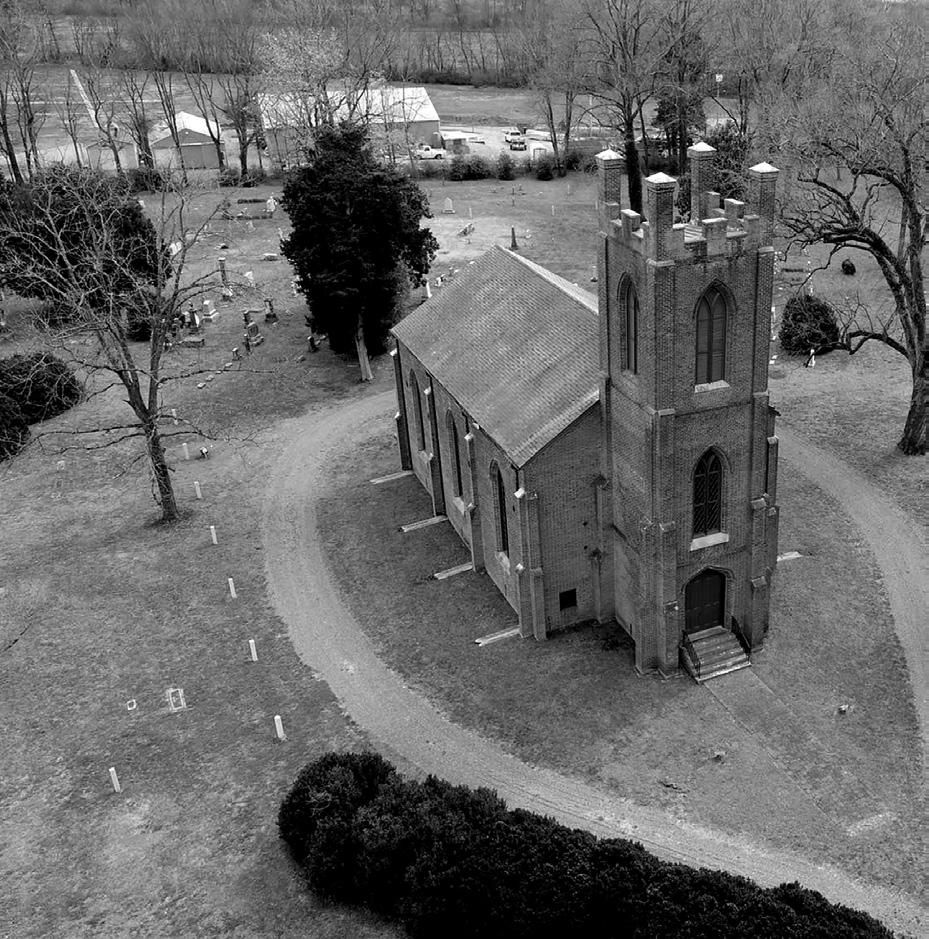
1 minute read
History Corner
A LOOK AT SAINT JOHN’S EPISCOPAL CHURCH IN ASHWOOD, TENN.
By Ridley Wills II
If someone asked me, a Presbyterian, what I think is the most beautiful church in Middle Tennessee, I would say that it’s Saint John’s Episcopal on State Highway 6 between Columbia and Mt. Pleasant.
The church was the fulfillment of the dream of Leonidas Polk, the Episcopal Bishop of Louisiana and a major general in the Confederate Army. He gave the land, supervised the construction and financially supported this three-year effort. His brothers, who owned adjoining plantations, helped build the church. Enslaved people cut the trees and hewed the timbers for beams and floors. The foundation stones were quarried from a nearby site, and from a large wild cherry tree on the church grounds the altar, communion rail and balcony were made. Polk’s mother gave the church a silver communion service.
The building, which measured 42’ by 65’ and had walls sixteen inches wide, was completed in 1842 and the bell installed in the church tower in 1849. At the consecration service on Sept. 4, 1842, white families took seats first and enslaved people, who built the building, and their families found places to sit where they could in the filled to capacity building.
Several members of the Polk family are buried in the cemetery behind the church. Also buried there is Bishop James H. Otey, founder of the Episcopal Church in Tennessee. Bishop Polk asked to be buried there. However, after he was killed on Pine Mountain near Marietta, Ga., in 1864, he was buried in the crypt beneath the chancel of Saint Paul’s Episcopal Church in Augusta, Georgia. In 1945, his remains were moved to Christ Church Cathedral in New Orleans because he had been Bishop of Louisiana.
Today, only a couple of worship services are held at Saint John’s annually. The only person I know of who has been buried there in recent decades is the son of Tommy and Evelyn Trabue, of Nashville.










